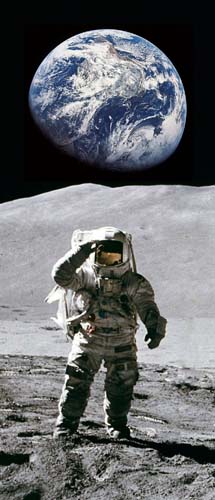  Space programInternational cooperation Since 2005 Friland is a member of the ESA; it especially contributes on the terrains of computer technology and rocket parts. Besides that, the country cooperates with the International Space Station ISS and by now three Frilandic-built satellites are present in earth's orbit. National space program  Although Friland mainly takes part in larger, European space projects, it does have a modest, national space program. Because of the high costs this program is subject to controversy within Frilandic politics; opponents see it as a much too expensive project of prestige that only serves to boost the national ego, while supporters point to the fact that a private program prevents Frilandic technology from falling into the wrong (read: "Hiverian") hands and that the country should also avoid becoming too dependant on Europe in order to preserve its neutrality. The Frilandic space program is led by the FRŽ, the Frilandiska Rumsenž Žewanost (Frilandic Space travel Service).
Although Friland mainly takes part in larger, European space projects, it does have a modest, national space program. Because of the high costs this program is subject to controversy within Frilandic politics; opponents see it as a much too expensive project of prestige that only serves to boost the national ego, while supporters point to the fact that a private program prevents Frilandic technology from falling into the wrong (read: "Hiverian") hands and that the country should also avoid becoming too dependant on Europe in order to preserve its neutrality. The Frilandic space program is led by the FRŽ, the Frilandiska Rumsenž Žewanost (Frilandic Space travel Service).Private projects Although technology from the ESA countries is also imported for private projects, most parts needed for rockets, satellites and other things are developed and built in Dunwik. Especially in Frireta, the country's largest center of technology. The universities of Dunwik and Spirdung also play a role in the Frilandic space program, though the details about this are kept secret. Most launches take place in cooperation with ESA on the spaceport in Kourou, French Guyana. However, Friland also has its own spaceport: Sternanutfal Emgrund (Star Base Emgrund) near Emgrund in the Nuržland shire. First Frilander in space On September 21, 2022 Audwen Wulžssun became the first Frilander in space. He took off on Soyuz flight MS-22 to the International Space Station (ISS), where he carried out repairs and scientific experiments. The mission was a collaboration between FRŽ, ESA, NASA and Roscosmos. Moon landing One of the most controversial projects is Project Moon Rock (Andwarp Menstain), the plan to send Frilandic astronauts to the moon. On February 11, 2013 Argaiz Ingwaldssun, minister of Science, announced this in a speech on the university of Dunwik. Due to its high costs the plan was heavily criticised, but the minister assured the Riksžing that the costs would not be as high as was initially feared because it was a very long term project. Part of the money went to the development of a small space shuttle, which was done in cooperation with other countries. With this shuttle Frilandic astronauts would, at its earliest, be able to land on the moon in 2020 to perform geological research, amongst other things. Targeted for this was the Plato crater, north of Mare Imbrium. Because feasibility studies of the plan were positive, the cabinet gave green light and increased the FRŽ's budget. However, due to overspending the project was postponed indefinitely in 2019. So Frilandic astronauts standing on the moon will not be for tomorrow... Satellites Two of the three Frilandic satellites (TLM1 and TLM2) have been launched in European connection. The development and launch of the third satellite (TLM3) however, was fully performed nationally. It is rumoured that this was done because the TLM3 also contains spying equipment to keep an eye on neighbouring country Hiveria, but this is denied by the FRŽ. Rockets The pride of the FRŽ is a self-developed booster named Slaipnar ("Glider"), which is named after the horse of the god Wodan. After years of development and testing, the first Frilandic rocket was launched on July 1, 2008; a Slaipnar type with the TLM3 satellite on board. The launch was flawless and was broadcasted live on Frilandic television. Transcription of the spoken text in the video: Frilandic: Tehunž, newunž, aht, sebun, sehs, femf, fedwor, žre, twai, ain, andstik! And upgang! Upgang fan ža airista Frilandiska rumteug! It es laus fan ža tur and underweg til ain hau fan sehsandžretig žushund kilometar med an baurd ain neuja tidunglistmen. English: Ten, nine, eight, seven, six, five, four, three, two, one, ignition! And lift-off! Lift-off of the first Frilandic space craft! It is clear of the tower and underway to an altitude of thirty six thousand kilometres with on board a new communication satellite.  |